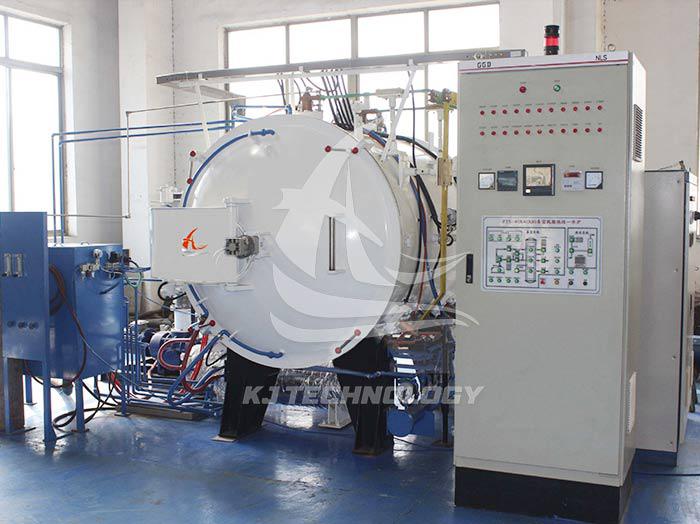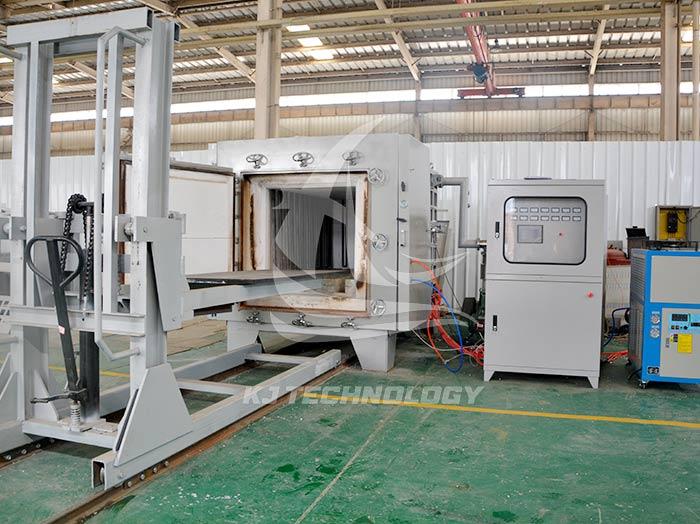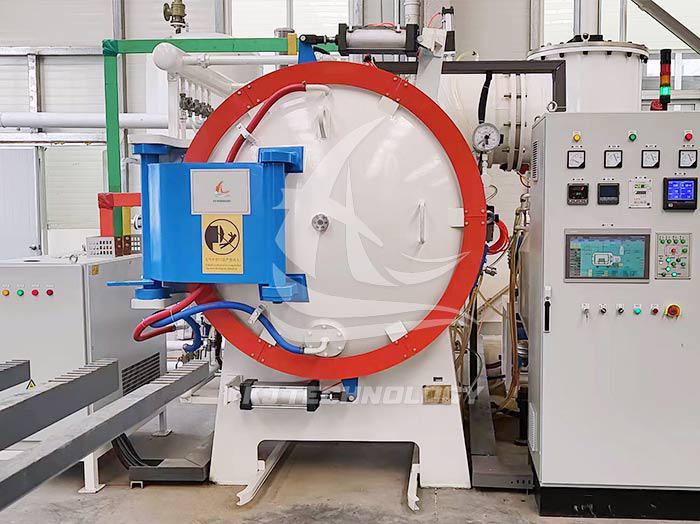High vacuum heat treatment electric furnace for processing high-speed steel
 09-26-2025 Author: KJ technology
09-26-2025 Author: KJ technology
High vacuum heat treatment electric furnaces can process high-speed steel and have significant advantages in improving material properties, reducing deformation, and enhancing surface quality, which are reflected in the following aspects:
1. Technological advantages
No oxidation and decarburization: The vacuum environment eliminates reactive gases such as oxygen, avoiding oxidation and decarburization on the surface of high-speed steel. After quenching, the surface of the workpiece is bright and does not require subsequent polishing treatment.
Small deformation: After vacuum quenching, the size and shape of the workpiece change little, which generally eliminates the need for mechanical processing to repair deformation and improves production efficiency. For example, after vacuum heat treatment, the processing allowance of SKH9 punch used for cold deformation is about half of that of salt bath heat treatment, and the bending deformation is significantly reduced.
Uniform hardness: Products that have been vacuum quenched have uniform hardness, good process stability and repeatability, and are suitable for large-scale production. High speed steel can be quenched to 70-100mm, and high alloy hot work die steel can reach 25-100mm.
Degassing effect: Vacuum environment helps to remove gas impurities such as hydrogen, oxygen, and nitrogen inside the workpiece, reduce defects such as pores and cracks, and improve material properties.
2. Cooling method and applicability
Gas quenching:
Principle: Fill the cooling chamber with high-purity inert gases (such as nitrogen and argon) and achieve rapid cooling through gas convection.
Applicability: Suitable for tool steels with high hardenability (such as Cr12MoV) and workpieces with small effective thickness. For example, when quenched with high-pressure nitrogen gas at 1000kPa, the cooled load can be dense, with an increased load density compared to when cooled at 600kPa.
Oil quenching:
Principle: After heating the workpiece in the heating chamber, it is moved to the cooling chamber and filled with high-purity nitrogen gas, which is immediately sent to the quenching oil tank for rapid cooling.
Applicability: Suitable for workpieces that require higher cooling rates, such as larger sizes or larger furnace loads. However, it should be noted that quenching oil is thermally decomposed and carbonized, which may attach to the surface of the tool and affect its surface brightness.
High pressure gas quenching:
Principle: Inject high-purity nitrogen gas with a pressure of 5-6 bar into the furnace to improve the gas cooling capacity.
Applicability: It has a large cooling capacity and can even quench high-speed steel tools with a diameter of 100mm or more.
3. Process parameter control
Vacuum degree selection:
Principle: Choose the appropriate vacuum degree based on the vapor pressure of alloy elements in steel. For example, high-speed steel with a high content of Mn should choose a lower vacuum degree (such as 13.3Pa) during quenching heating to prevent the volatilization of Mn.
Practice: Usually, during the second preheating or before reaching the quenching heating temperature, high-purity inert gas is refilled into the furnace to control the vacuum degree within the range of 10~10 ³ Pa for heating.
Heating and preheating temperature:
Preheating: High speed steel has poor thermal conductivity. To reduce the stress generated during heating, which may cause tool distortion or even cracking, one or two preheating cycles are usually used. The first preheating temperature is 550~600 ℃, and the second preheating temperature is 850~900 ℃.
Heating temperature: The general quenching temperature for high-speed steel is 1180-1280 ℃. At such high temperatures, elements such as chromium, manganese, and aluminum are highly volatile, so it is necessary to strictly control the vacuum degree and heating time.
Insulation time:
Principle: Considering that vacuum heating is mainly based on radiation, the heating speed is slow, the heating process is long, and the insulation time is generally longer than that of salt bath furnaces and air furnaces.
Empirical formula: insulation time=insulation coefficient x effective thickness of mold+time margin.








